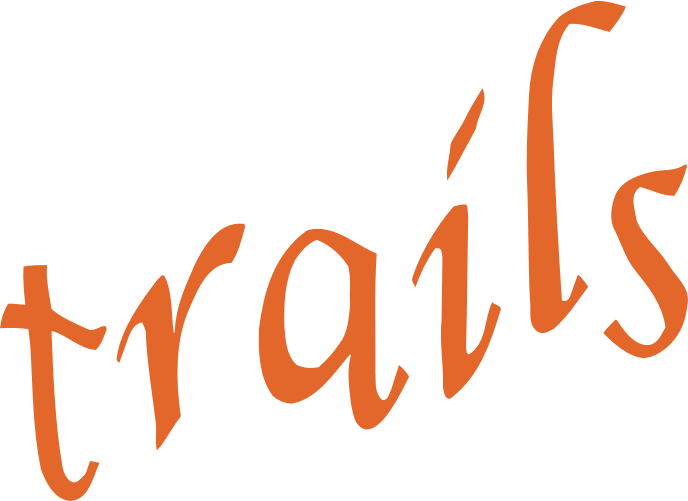-
measure Delay of Gratification Task
Study: RADAR Mode of collection: Observation Available measurements: Third Generation G3 - T2The Delay of Gratification task aims to measure self-regulation by presenting the child with the choice between a small reward in the short-term and a larger reward in the long-term. The classic implementation of the Delay of Gratification task is the Marshmallow experiment, in which a child is presented with one marshmallow right now and is instructed...Created October 17, 2024 • Updated October 20, 2024 -
measure Infant-Toddler Social and Emotional Assessment (ITSEA)
Study: RADAR Mode of collection: SelfAdministeredQuestionnaire Available measurements: Third Generation G3 - T2 G3 - T3The Infant-Toddler Social and Emotional Assessment (ITSEA) is an empirically validated clinical tool that was developed to assess social-emotional and behavior problems, as well as delays or deficits in the acquisition of competencies that may arise between the ages of 12 and 36 months.Created October 17, 2024 • Updated October 20, 2024 -
measure Early Childhood Behavior Questionnaire (ECBQ)
Study: RADAR Mode of collection: SelfAdministeredQuestionnaire Available measurements: Third Generation G3 - T2The Early Childhood Behavior Questionnaire (ECBQ) assesses temperament in children aged between 1-3 years old. It was designed to provide a more comprehensive and detailed assessment of temperament compared to existing measures appropriate for toddlers.Created October 17, 2024 • Updated October 20, 2024 -
measure Delay of gratification task - Raisin task
Study: TRAILS Mode of collection: Observation Available measurements: The Next Generation NEXT - T3The Delay of Gratification task aims to measure self-regulation by presenting the child with the choice between a small reward in the short-term and a larger reward in the long-term. The classic implementation of the Delay of Gratification task is the Marshmallow experiment, in which a child is presented with one marshmallow right now and is instructed...Created October 17, 2024 • Updated October 20, 2024 -
measure Infant-Toddler Social and Emotional Assessment (ITSEA)
Study: TRAILS Mode of collection: SelfAdministeredQuestionnaire Available measurements: The Next Generation NEXT - T3The Infant-Toddler Social and Emotional Assessment (ITSEA) is an empirically validated clinical tool that was developed to assess social-emotional and behavior problems, as well as delays or deficits in the acquisition of competencies that may arise between the ages of 12 and 36 months.Created October 17, 2024 • Updated October 20, 2024 -
measure Infant Behavior Questionnaire Revised (IBQ-R)
Study: TRAILS Mode of collection: SelfAdministeredQuestionnaire Available measurements: The Next Generation NEXT - T2 NEXT - T3 NEXT - T4 NEXT - T5The Infant Behavior Questionnaire (IBQ) and Infant Behavior Questionnaire-Revised (IBQ-R) were designed to measure temperament in infants between the ages of 3 and 12 months. The IBQ assesses dimensions of temperament, such as activity level, soothability, fear, distress to limitations, smiling and laughter, and duration of orienting, among others. The...Created October 17, 2024 • Updated October 20, 2024 -
measure Early Childhood Behavior Questionnaire (ECBQ)
Study: TRAILS Mode of collection: SelfAdministeredQuestionnaire Available measurements: The Next Generation NEXT - T2 NEXT - T3 NEXT - T4 NEXT - T5The Early Childhood Behaviour Questionnaire (ECBQ) assesses temperament in children aged between 1-3 years old. It was designed to provide a more comprehensive and detailed assessment of temperament compared to existing measures appropriate for toddlers.Created October 17, 2024 • Updated October 20, 2024 -
measure Children’s Behavior Questionnaire (CBQ)
Study: TRAILS Mode of collection: SelfAdministeredQuestionnaire Available measurements: The Next Generation NEXT - T2 NEXT - T3 NEXT - T4 NEXT - T5The Children’s Behavior Questionnaire (CBQ) is a caregiver report that measures temperament in children aged 3 to 7 years. Domains of the CBQ include positive and negative emotion, motivation, activity level, and attention.Created October 17, 2024 • Updated October 20, 2024 -
measure Delay of gratification task - Present task
Study: TRAILS Mode of collection: Observation Available measurements: The Next Generation NEXT - T3The Delay of Gratification task aims to measure self-regulation by presenting the child with the choice between a small reward in the short-term and a larger reward in the long-term. The classic implementation of the Delay of Gratification task is the Marshmallow experiment, in which a child is presented with one marshmallow right now and is instructed...Created October 17, 2024 • Updated October 20, 2024 -
measure Temperament in Middle Childhood Questionnaire - Revised Short Form (TMCQ-R-SF)
Study: YOUth Mode of collection: SelfAdministeredQuestionnaire Available measurements: Baby and Child 5 months 10 months 3 years 6 yearsThe Temperament in Middle Childhood Questionnaire (TMCQ) is a highly differentiated assessment of temperament in middle childhood. Temperament dimensions for which TMCQ scales have been created were developed and adapted from the Children’s Behavior Questionnaire (CBQ: Rothbart, 2001), Hampton Individual Differences Questionnaire (Victor & Baker,...Created October 17, 2024 • Updated October 20, 2024 -
measure Infant Behavior Questionnaire Revised - Short Form (IBQ-R-SF)
Study: YOUth Mode of collection: SelfAdministeredQuestionnaire Available measurements: Baby and Child 5 months 10 months 3 years 6 yearsThe Infant Behavior Questionnaire (IBQ) and Infant Behavior Questionnaire-Revised (IBQ-R) were designed to measure temperament in infants between the ages of 3 and 12 months. The IBQ assesses dimensions of temperament, such as activity level, soothability, fear, distress to limitations, smiling and laughter, and duration of orienting, among others. The...Created October 17, 2024 • Updated October 20, 2024 -
measure Delay of gratification task
Study: YOUth Mode of collection: Observation Available measurements: Baby and Child 3 yearsThe Delay of Gratification task aims to measure self-regulation by presenting the child with the choice between a small reward in the short-term and a larger reward in the long-term. The classic implementation of the Delay of Gratification task is the Marshmallow experiment, in which a child is presented with one marshmallow right now and is instructed...Created October 17, 2024 • Updated October 20, 2024 -
measure Children’s Behavior Questionnaire (CBQ)
Study: YOUth Mode of collection: SelfAdministeredQuestionnaire Available measurements: Baby and Child 5 months 10 months 3 years 6 yearsThe Children’s Behavior Questionnaire (CBQ) is a caregiver report that measures temperament in children aged 3 to 7 years. Domains of the CBQ include positive and negative emotion, motivation, activity level, and attention.Created October 17, 2024 • Updated October 20, 2024 -
measure Infant-Toddler Social and Emotional Assessment - Revised (ITSEA-R)
Study: YOUth Mode of collection: SelfAdministeredQuestionnaire Available measurements: Baby and Child 3 yearsThe Infant-Toddler Social and Emotional Assessment (ITSEA) is an empirically validated clinical tool that was developed to assess social-emotional and behavior problems, as well as delays or deficits in the acquisition of competencies that may arise between the ages of 12 and 36 months.Created October 17, 2024 • Updated October 20, 2024 -
measure Early Childhood Behavior Questionnaire - Revised Short Form (ECBQ-R-SF)
Study: YOUth Mode of collection: SelfAdministeredQuestionnaire Available measurements: Baby and Child 5 months 10 months 3 years 6 yearsThe Early Childhood Behavior Questionnaire (ECBQ) assesses temperament in children aged between 1-3 years old. It was designed to provide a more comprehensive and detailed assessment of temperament compared to existing measures appropriate for toddlers.Created October 17, 2024 • Updated October 20, 2024 -
measure Hand Game
Study: YOUth Mode of collection: Observation Available measurements: Baby and Child 3 yearsThe Hand game aims to measure non-verbal inhibitory control in children aged 3 to 5 years and is based on the adapted hand game by Hughes (1996). During the task, the child is asked to place a flattened hand on the table whenever the researcher presents a fist and to present a fist whenever the researcher places a flattened hand on the table. Each child...Created October 17, 2024 • Updated October 20, 2024



